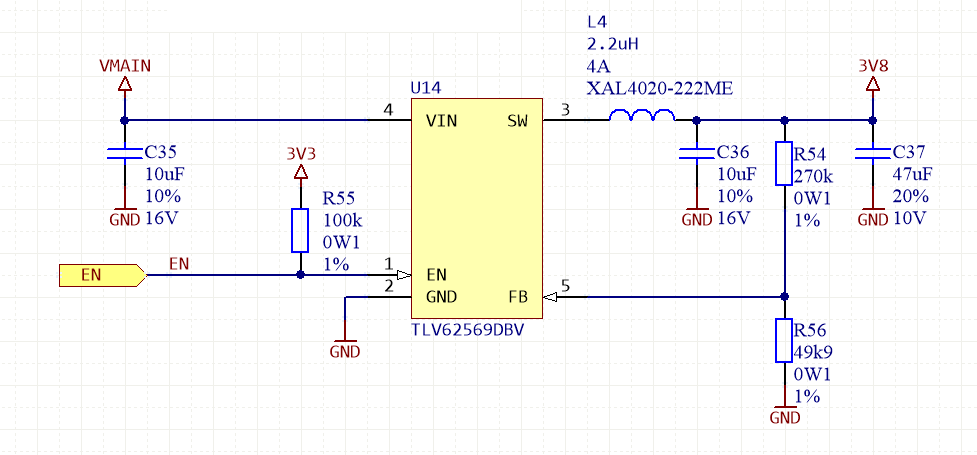Hello there,
I have the following design:
VIN can vary from 3.8V to 5 V. At the output I need a stable 3.8 V with 2A peak currents. This buck converter is very convienet for me as its very space sensitive and has comfortable package. It is a bit small however and I am wondering either it can really supply up to 2 Amps. Could I ask for a peer review of the schematics? I would appreciate all help.


